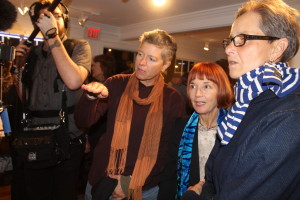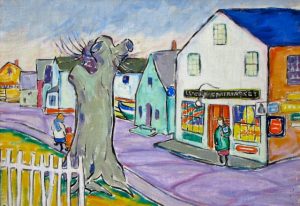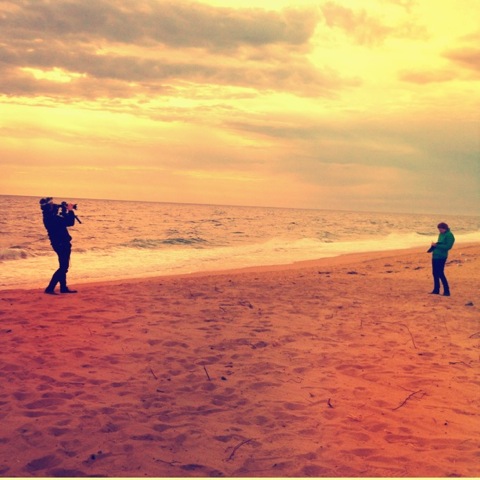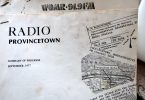
Jane Anderson, center, award-winning playwright, screenwriter and director, talks about the work of her great-aunt Edith Lake Wilkinson at the Larkin Gallery last Friday as a documentary crew records the moment.
PROVINCETOWN –Jane Anderson, an award-winning playwright, screenwriter and film director from Los Angeles, stood on a chair so she could be heard in the packed Larkin Gallery Friday night, as a crowd spilled out onto Commercial Street in Provincetown’s East End.
The occasion was the first one-woman show for Edith Lake Wilkinson, who was Anderson’s great-aunt and an artist who painted in Provincetown from 1915 to 1923.
But in what appears to be a terrible injustice, in 1925, Wilkinson, at age 58, was committed to an insane asylum where she spent the last 30 years of her life.
“The last time Edith was here was almost 90 years ago,” Anderson said to the crowd gathered at Larkin. “No doubt she came into this very spot to buy her supplies.”
Coincidently, a building that appears to be the same one that houses the Larkin Gallery is in one of Wilkinson’s paintings with the sign, “West End Market,” a business that Wilkinson likely patronized when she lived in Provincetown.
One-Woman Show
A large tree in that same painting’s foreground is severely cut back, “blunted and homely and barely alive”—in Anderson’s words. Anderson believes the tree in the painting is the same one that is across the street, now fully recovered, its long limbs dense and heavy with green leaves.

Edith Lake Wilkinson painted the “West End Market” during her visits to Provincetown between 1915 and 1923. This week, a one-woman show of her work was on display in the same building, which is now the Larkin Gallery. The tree across the street is also still there, but it is now lush and green.
“When you leave the gallery tonight, pay your respects to that tree. It bares witness to her resurrection,” she said of her great-aunt’s return to Provincetown in the gallery show.






























